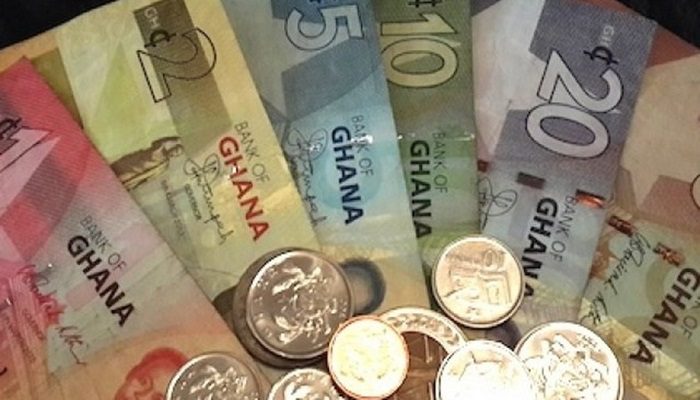The Cedi, has defied the odds in 2025 by staging a nearly 16% appreciation against major international currencies, especially the U.S. dollar.
This surge has surprised even the most seasoned economists, considering the Cedi’s historical vulnerability to external shocks and internal imbalances.
But this reversal in fortunes is no accident.
It is the product of a carefully woven tapestry of policy decisions, international monetary dynamics, and evolving investor sentiment.
A deep dive into the mix of domestic reforms and external trends reveals how gold-backed initiatives, injection of $490 million into the foreign exchange market during April, strategic debt restructuring, and the fading dominance of the U.S. dollar are collectively shaping a new narrative for the Ghanaian economy.
A reduction in demand for the U.S. dollar and improved interbank liquidity contributed to the cedi’s strength.
The Dollar’s weakness
At the core of the Cedi’s newfound strength is an unlikely ally: the declining U.S. dollar.
In 2025, the dollar has lost nearly eight percent of its value, sending shockwaves through global financial markets.
Once hailed as the ultimate safe-haven asset, the greenback is under immense pressure from multiple fronts — both economic and geopolitical.
The U.S. Federal Reserve, having spent years tightening interest rates to combat inflation, reversed course in early 2025.
As inflation cooled, the Fed paused rate hikes and hinted at cuts. This shift dampened returns on dollar-denominated assets and prompted capital flight to markets offering better yields.
As investors fled to Europe and Asia, the dollar’s grip on global finance began to loosen, benefiting currencies like the Ghanaian Cedi.
Additionally, soaring U.S. debt—now above $35 trillion—has unnerved foreign investors.
Mounting defense and healthcare costs, coupled with ballooning climate infrastructure expenditures, have forced Washington into more borrowing.
The implications are grave: high debt signals the potential for more money printing, stoking inflation fears and reducing trust in U.S. Treasury bonds.
The result? A dollar slowly losing its luster.
And perhaps more structurally damaging is the accelerating global trend of de-dollarization.
Fed up with the dollar’s dominance and its use as a geopolitical weapon, countries such as China, Brazil, Russia, and Saudi Arabia are actively bypassing the greenback in bilateral trade.
The dollar’s share of global currency reserves has now dropped below 58%, a two-decade low, according to the International Monetary Fund (IMF).
As international trade and central bank reserves diversify, the demand for dollars is steadily eroding—making space for emerging market currencies like the Cedi to thrive.
Building buffers with bullion
While global developments create tailwinds, Ghana’s internal strategies have been equally instrumental.
At the heart of this domestic policy revolution is gold—an asset the Bank of Ghana (BoG) has repositioned from a marginal reserve item to a central pillar of its monetary defense strategy.
The Domestic Gold Purchase Programme, first launched in 2023 with former Vice-President Dr Mahamudu Bawumia spearheading it, has rapidly expanded the central bank’s reserves and injected resilience into the Cedi.
The government purchased 20% of all gold produced by large scale miners and paid in cedis.
In total, the BoG acquired 88.4 tonnes of gold valued at more than $6.87 billion.
As of June 2024, the country’s gold reserves stood at 73 tonnes, up from 65.4 tonnes at the end of 2023.
This significant increase has diversified Ghana’s reserve holdings and reduced dependence on volatile foreign currencies.
Crucially, the BoG’s gold stockpile isn’t merely sitting in vaults.
Portions of it have been leveraged through the Gold-for-Oil programme, allowing the government to import fuel in exchange for gold, thereby reducing pressure on the forex market.
Under this model, dore gold is assayed by the Precious Minerals Marketing Company (PMMC), valued according to global prices and prevailing exchange rates, and used to procure refined oil products without tapping into scarce dollar reserves.
This move has dual benefits: it shores up foreign exchange liquidity and anchors the Cedi against speculative attacks.
By ensuring quick payments and refining the gold to LBMA-certified standards (99.99% fineness), the BoG has also boosted confidence in Ghana’s monetary infrastructure.
Historically, gold played a limited role in the country’s reserve mix. But by revisiting and modernizing this 1960s-era strategy, the BoG has aligned itself with global central banking best practices.
With gold prices surging by 23% in 2025, the timing could not have been more fortuitous. Gold-backed financing is increasingly being viewed as a reliable hedge in uncertain markets—and Ghana is ahead of the curve.
Debt restructuring: Easing the fiscal burden
Another cornerstone of Ghana’s macroeconomic turnaround is its aggressive debt restructuring programme, which has significantly reduced the government’s financial obligations and bolstered investor sentiment.
Following negotiations with official creditors and Eurobond holders, Ghana secured $2.8 billion in relief from bilateral lenders, cancelled $4.7 billion worth of Eurobonds, and obtained $4.4 billion in cash flow relief under its IMF-supported programme.
Domestically, a successful restructuring of local debt instruments has yielded savings of over GH₵61 billion.
These measures have eased debt servicing pressures, freeing up resources for essential expenditures and reducing the risk of default.
The knock-on effect has been profound: Ghana’s external financing needs have diminished, less forex is being drawn down to repay loans, and the Cedi has faced less depreciation pressure.
Moreover, the country’s participation in the IMF programme has increased transparency and instilled confidence among international partners.
This, in turn, has supported disbursements, attracted concessional financing, and stabilized the Cedi.
Investor confidence and reserve strength
The combined effect of the domestic gold strategy, debt restructuring, and favorable global conditions has created a virtuous cycle of strengthening investor confidence and growing foreign exchange reserves.
The BoG’s reserves bolstered not just by gold acquisitions but by declining external payment obligations.
This is no small feat. In previous years, the Cedi’s weakness was often traced to reserve depletion, balance of payment pressures, and investor pessimism.
Today, those dynamics are changing.
Investors are increasingly viewing Ghana as a beacon of reform in a region fraught with currency instability.
The Cedi’s appreciation has also improved Ghana’s risk profile, lowered inflationary expectations, and made the country more attractive for direct investment and capital inflows.
Sustaining the gains
Despite these achievements, sustaining the Cedi’s momentum will require continued discipline and innovation.
Global headwinds such as geopolitical tensions, energy price volatility, and shifts in global monetary policy could test the current stability.
Domestically, Ghana must guard against fiscal slippage, ensure that gold reserves are well-managed, and maintain the credibility of its exchange rate framework.
The BoG’s gold programme must evolve with market realities, ensuring long-term sustainability rather than short-term fixes.
Nevertheless, 2025 has marked a turning point in Ghana’s economic narrative.
The Cedi, once viewed as vulnerable and volatile, is now drawing praise for its resilience.
In the interplay between a weakening dollar and a rising Ghanaian gold strategy, the Cedi has found strength not just in numbers, but in vision.
As global currencies jostle for prominence in a changing economic order, Ghana’s careful calibration of domestic reforms and international opportunity may just serve as a blueprint for emerging market resilience.
By ELVIS DARKO, Accra
- Friday, May 9, 2025 Newspaper Headlines - 9 May 2025
- Adangabey brightens rural kids’ future from his wheelchair - 9 May 2025
- Stanbic donates ICT equipment to UHAS for digital learning - 9 May 2025




